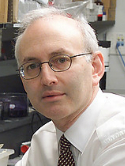| Abstract: |
The quantity of hematopoietic progenitors in an apheresis collection is defined by the number of CD34+ cells or granulocyte macrophage colony- forming units present. These parameters are believed to give roughly equivalent information on graft quality. We here report that the in vitro proliferative potential of r-metHuSCF (stem cell factor) plus filgrastim (granulocyte colony-stimulating factor; r-metHuG-CSF) mobilized peripheral blood (PB) CD34+ cells obtained from previously heavily treated non- Hodgkin's lymphoma patients inversely correlates with extent of prior therapy. CD34+ cells were enriched using the CellPro Ceprate system and placed in liquid culture for 4 weeks in the presence of either r-metHuSCF, IL-3, IL-6, filgrastim (S36G), or S36G plus erythropoietin (S36GE) with a weekly exchange of media and cytokines with reestablishment of culture at the starting cell concentration (Delta assay) and enumeration of progenitors. Starting with 4 x 104 CD34+ cells from apheresis samples from patients who had received <10 cycles of prior chemotherapy, progenitors were detectable in culture at 4 weeks 81% of the time as compared to 14% with CD34+ cells from patients who had received >10 cycles and 5% for >10 cycles plus radiotherapy. The total number of progenitors generated over the duration of culture (area under the curve) was calculated using the trapezoidal rule as a novel measure of the proliferative potential of the enriched PB CD34+ cell population. The median area under the curve of CD34+ cells from patients receiving <10 cycles of prior chemotherapy was 7.4 and 5.7 (x l05) using S36G or S36GE, respectively, 1.8 and 1.9 if the patients received >10 cycles of prior chemotherapy, and 1.4 and 1.2 if the patients received >10 cycles of prior chemotherapy plus radiotherapy (P < 0.001). These data show that prior therapy impacts on the quality of PB CD34+ cells as measured by their ability to generate committed progenitors over a number of weeks in liquid culture. |









